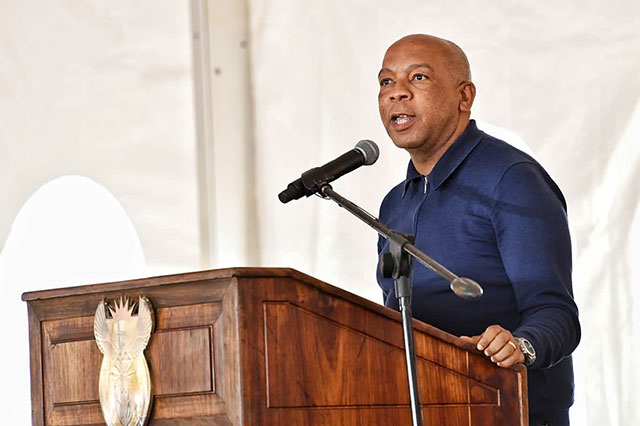Cape Town – Electricity Minister Kgosientsho Ramokgopa has reaffirmed the government’s commitment to ending load shedding.
Briefing media on progress in the implementation of the Energy Action Plan in Pretoria on Sunday, the minister said that significant progress is being made in collaboration with competent engineers at Eskom and the Board’s leadership.
“I want to give you confidence that we are going to resolve this, it’s an engineering problem. I eat, breathe and sleep [finding] solutions to load shedding and I’m confident that with the team that is helping us, we will be able to resolve load shedding.
“We will get out of load shedding and build a buffer and ensure that the South African economy is able to realise its potential,” Ramokgopa said.
He provided an update on the current available capacity, stating that it was plateauing at around 29,913 Megawatts compared to 28,664 Megawatts in late June.
[WATCH]: Briefing members of the media on the progress regarding the implementation of the Energy Action Plan. pic.twitter.com/sVWiMyABe3
— Dr Kgosientsho Ramokgopa (@Kgosientsho_R) July 2, 2023
“We are making significant improvements of about 1 300 Megawatts of improvement [and] what is encouraging for me is that we are beginning to maintain that,” Ramokgopa said.
He highlighted the need for generation to exceed demand in order to accommodate planned maintenance and build a buffer for future economic growth and recovery.
“In that way we would be able to pull a number of units through planned maintenance and we would be able to build a buffer, so that, as the South African economy continues to grow and recover, we would have sufficient generation capacity,” the minister said.
The minister emphasised the importance of addressing partial load losses and mentioned tapping into external expertise to diagnose and determine the root causes of failures.
“We are able to diagnose and determine the root causes of the failures from one unit to the other – what are the common failures that are responsible for the failing of that unit and/or responsible for the partial load losses? Then we know the biggest culprits on the units going out is boiler tubes, quality of the coal, us keeping to the emission parameters.
“We are very meticulous [and] deliberate. There’s is a degree of granularity on how we are beginning to understand the performance of these units and the kinds of skills and interventions that are required to help us to address this situation,” Ramokgopa said.
Follow African Insider on Facebook, Twitter and Instagram
Picture: Twitter/@PresidencyZA
For more African news, visit Africaninsider.com
Compiled by Betha Madhomu


